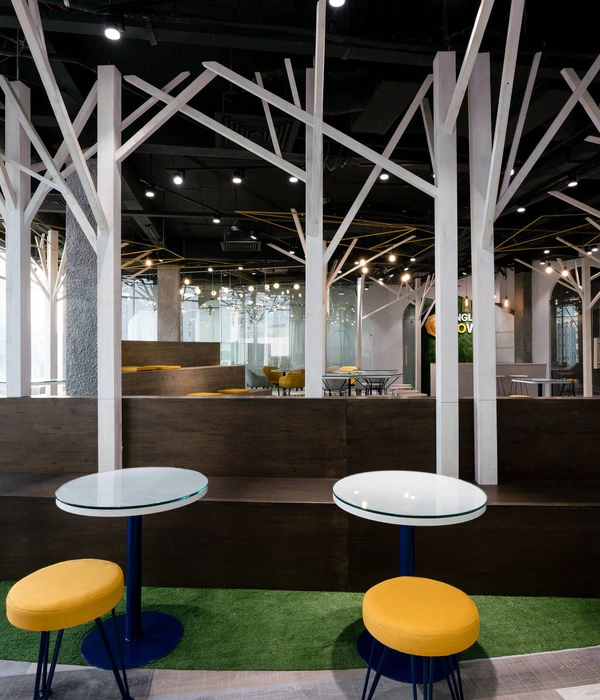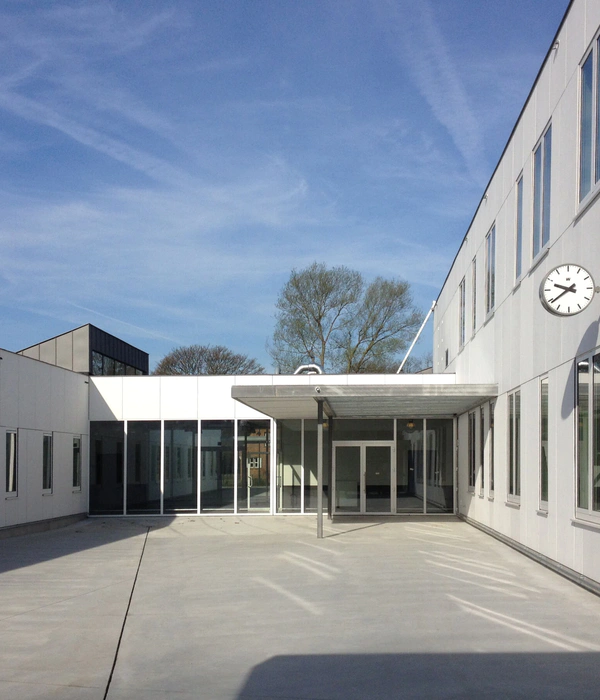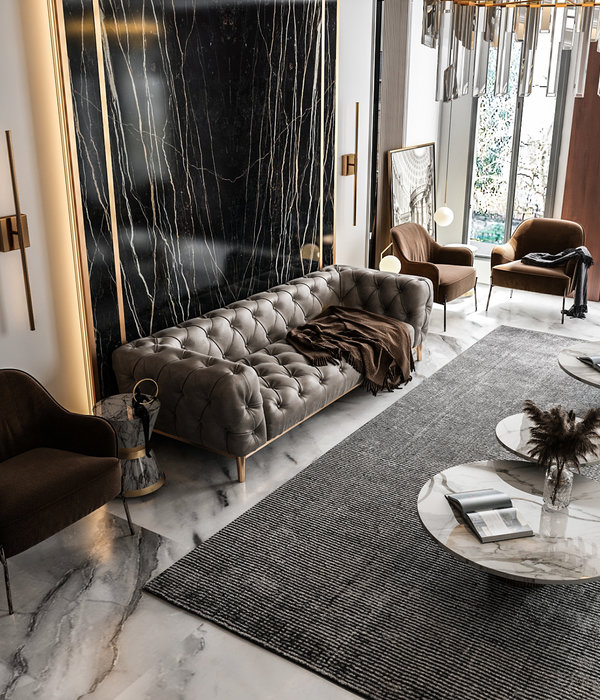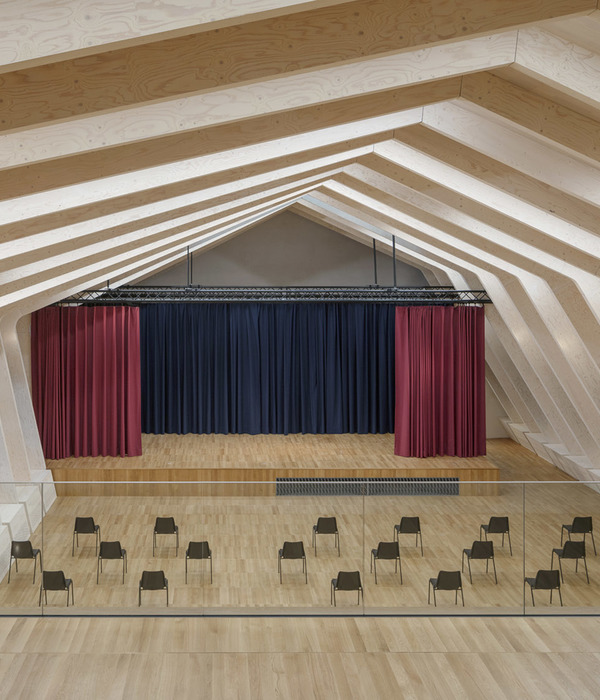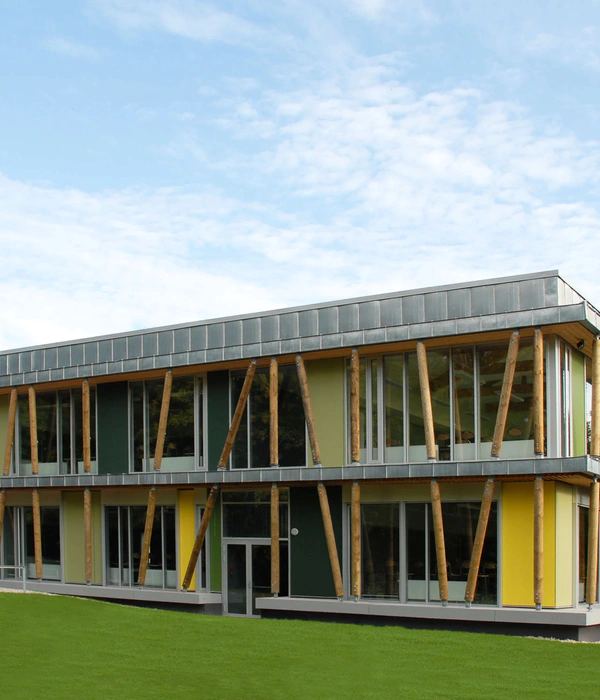英文名称:Chile Catholic University School of Architecture
位置:智利
设计公司:Gonzalo Claro
摄影师:Philippe Blanc, ErietaAttali
这是由Gonzalo Claro设计的智利天主教大学建筑学院教学楼。该项目位于Lo Contador校区南部,毗邻一座祖传住宅。该项目是公共竞赛评选而来的。该建筑由双层通高的木制体量组成的,轻巧地坐落于混凝土基座之上。木构建筑的梁柱以一种模块化的系统布局,促进预制、安装以及组件运输的阶段进行。建筑中木材的运用避免了切割,使其更加高效,并充分利用了自身创建的尺度。木材骨架保持外露,将建筑结构展示出来,更好地令人感受建筑竖向和横向承载力的分布。
From the architect. The new building of the Architecture School of Pontificia Universidad Católica de Chile is emplaced in the south corner of Lo Contador campus, aside of the large patrimonial house. It is the result of a public contest.
The building consists of a double height volume of laminated wood witch lies lightly over a concrete plinth. The wood structure of columns and beams is arranged in a modulated system, which facilitates the stages of preassemble, installation and later transportation of the parts. There use of wood in the construction of the building consists in avoiding cuts and making an efficient use and taking advantage of its established dimensions. The timber skeleton remains exposed in order to make visible the way that the structure works, and the distribution of loads along the vertical and horizontal development of the building. The complete volume saves a span of 21 meters between supports; leaving the west side with a 9-meter corbel witch leaves a new hallway of access to the Campus.
This volume was built to contain the offices for the professors, this functional programme was left in the main interior, releasing these way the first floor and the ceiling to be destined to display the programs that increases the university life in the building, leaving this way a ground-level covered patio, and a auditorium in the superior terrace wich is at the same time a viewpoint to the surrounding treetops of the neighborhood.
This construction is structured in wood, which helps in achieving the goal of sustainability from the very beginning of the project since it is a renewable resource and a material with a very low carbon footprint. It was mounted as a dry work technique that decreased the construction time along with the impact provoqued in the surrounding neighborhood and its inhabitants. Passive resources used in this building, such as natural cross ventilation, aimed to reduce the mechanized air conditioning and making this construction energetically efficient.
Although its program is mainly for private use, it is a building with a strong public vocation, it opens its front to the city and turns its internal academic activity towards the street generating a new relation of unprecedented permeability of the campus with the neighborhood in which it is located and its community.
智利天主教大学建筑学院教学楼外部实景图
智利天主教大学建筑学院教学楼内部实景图
智利天主教大学建筑学院教学楼局部实景图
智利天主教大学建筑学院教学楼示意图
智利天主教大学建筑学院教学楼平面图
智利天主教大学建筑学院教学楼立面图
智利天主教大学建筑学院教学楼剖面图
{{item.text_origin}}

